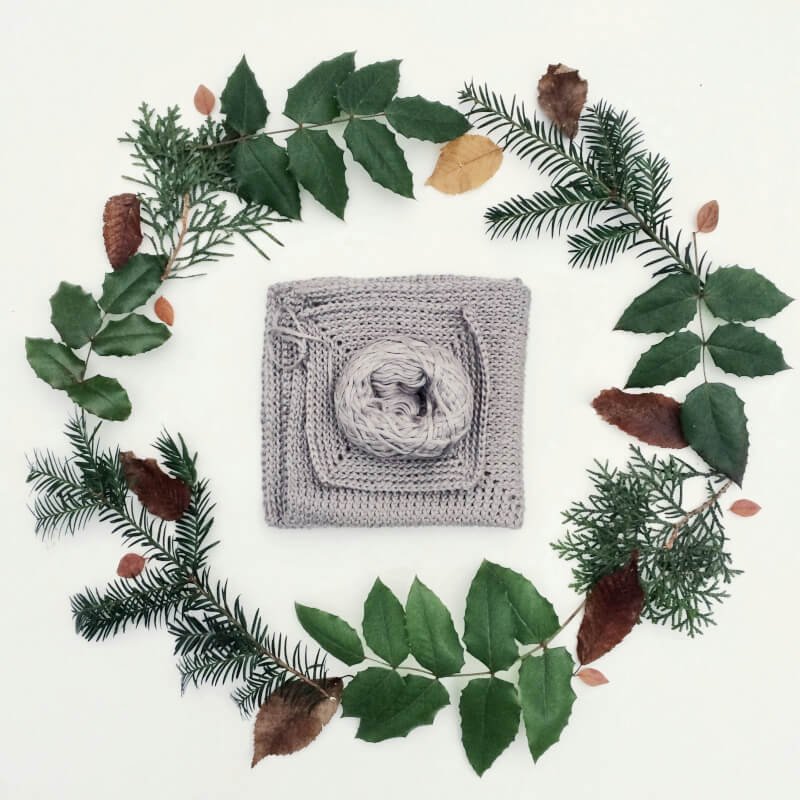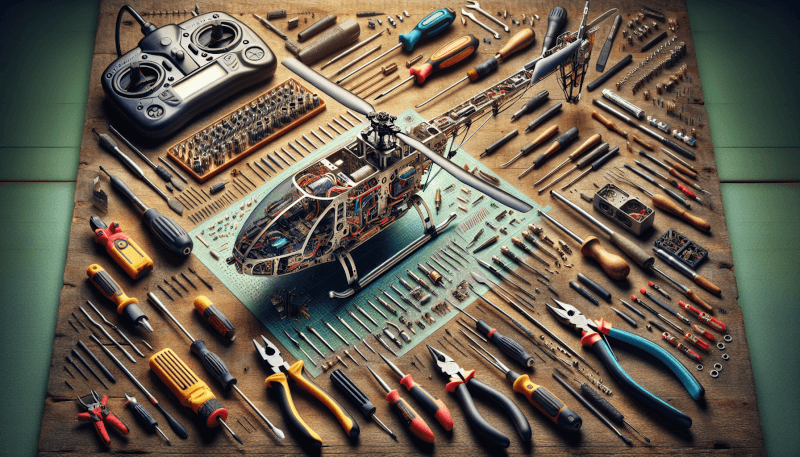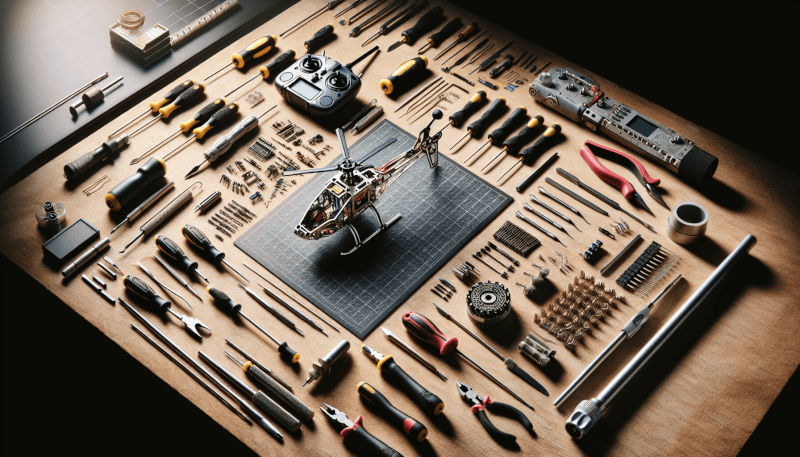Have you ever felt the thrill of flying your own RC heli? Whether you’re a seasoned pilot or just starting out, tinkering and experimenting with your RC heli can take your flying experience to new heights. In this article, we will explore some best practices that will help you get the most out of your tinkering sessions. From understanding the basics to trying out new modifications, we’ll guide you through the exciting world of RC heli customization. So grab your tools and get ready to unleash your creativity as we dive into the best practices for tinkering and experimenting with your RC heli!

Understanding the Basics
Getting to Know Your RC Heli
Before diving into tinkering and experimenting with your RC heli, it’s essential to have a good understanding of its basic components and how they work together. Familiarize yourself with the helicopter’s main parts, such as the main rotor, tail rotor, motor, frame, and electronics. Take the time to read the instruction manual and study the diagrams provided by the manufacturer to gain a comprehensive understanding of your RC heli’s construction.
Understanding the Controls
To effectively experiment and improve your RC heli’s performance, you need to have a solid understanding of the controls at your disposal. The primary control mechanism for an RC heli is the transmitter, which allows you to manipulate various channels, including throttle, pitch, yaw, and roll. Take the time to practice using the transmitter and become familiar with how different controls affect the helicopter’s movements.
Learning About the Components
Understanding the different components of your RC heli is crucial, as it will allow you to make more informed decisions when tinkering and experimenting. Familiarize yourself with components such as the gyro, servo, receiver, and battery. Learn about the specific function each component performs within the helicopter’s system and how they interact with one another.
Mastering Flight Modes
Flight modes offer different levels of control and stability for your RC heli. Typical flight modes include beginner, intermediate, and advanced modes. By mastering these flight modes, you can gradually progress in your piloting skills and experiment with different levels of complexity. Begin with the beginner mode to hone your basic piloting skills, then gradually progress to intermediate and advanced modes as you become more comfortable with the controls.
Safety Precautions
Choosing a Suitable Flying Area
Selecting an appropriate flying area is crucial for both your safety and the protection of others. Look for open spaces away from populated areas, obstacles, and overhead power lines. Avoid flying your RC heli near airports or restricted airspace. It’s also important to respect local regulations and obtain any necessary permits or licenses.
Checking Weather Conditions
Before taking your RC heli out for a flight, always check the weather conditions. Avoid flying during high winds, rain, or storms, as these conditions can pose significant risks to both you and your helicopter. Strong winds can affect stability and control, and rain can damage delicate electronic components. Flying in calm weather conditions will enhance the safety and enjoyment of your flights.
Inspecting the Helicopter Before Flight
Performing a pre-flight inspection is an important safety step that should never be overlooked. Check the overall condition of your RC heli, looking for any signs of damage or wear. Ensure that all screws and fasteners are tightened securely. Inspect the blades for any cracks or damage, and verify that the battery is securely connected. It’s also a good practice to check the tail rotor system and the motor to ensure they are functioning correctly.
Using Protective Gear
Protective gear plays a significant role in ensuring your safety while experimenting with RC helis. Always wear safety goggles or glasses to protect your eyes from potential rotor strikes or debris. Consider wearing gloves to protect your hands during assembly or maintenance tasks. Additionally, it’s advisable to wear appropriate clothing that covers your body and arms to minimize the risk of injury.
Maintaining a Safe Distance
While tinkering and experimenting with your RC heli, it’s important to maintain a safe distance between yourself and the helicopter. This is especially crucial when the rotor blades are spinning. Stay clear of the rotor disc and avoid approaching the heli from the rear, as the tail rotor can also pose a hazard. By maintaining a safe distance, you reduce the risk of accidents or injuries.
Improving Flight Performance
Balancing the Helicopter
Properly balancing your RC heli is essential for optimal flight performance. The center of gravity (CG) should be located in the sweet spot specified by the manufacturer. Use a CG balancer or other balancing tools to ensure the helicopter’s weight is evenly distributed across its main rotor. Balancing the helicopter will help improve stability and maneuverability during flight.
Trimming for Stability
Trimming is the process of adjusting the control surfaces of your RC heli to achieve a stable flight. During flight, observe if the helicopter is drifting to one side or if it requires constant input to maintain a level flight. Make small adjustments to the controls or mechanical linkages to achieve a stable hover without any drift. This will result in a more enjoyable and predictable flying experience.
Adjusting the Gyro
The gyro is a critical component that helps stabilize the RC heli during flight. Experimenting with the gyro settings can greatly impact the helicopter’s stability and responsiveness. By adjusting the gyro gain, you can fine-tune the helicopter’s response to changes in pitch, yaw, and roll. It’s recommended to make small adjustments and test the helicopter’s behavior after each change for optimal results.
Experimenting with Different Blade Types
The type of rotor blades you use can significantly affect your RC heli’s flight performance. Different blade designs offer varying levels of stability, agility, and response. Experiment with different blade types to find the one that suits your flying style and preferences. Keep in mind that blade characteristics can vary based on material, shape, and length.
Refining Center of Gravity
In addition to overall balancing, refining the center of gravity (CG) can further enhance your RC heli’s flight performance. If you find your helicopter exhibits undesirable characteristics during flight, such as excessive vibrations or instability, adjusting the CG might help. Consult your RC heli’s manual or seek advice from experienced pilots to determine the optimal CG position for your specific model.
Fine-Tuning Controls
Calibrating the Transmitter
Proper calibration of your transmitter is crucial for accurate control response from your RC heli. Follow the manufacturer’s instructions to calibrate the transmitter and ensure that all control inputs are accurately translated to the helicopter’s corresponding movements. Calibration also helps eliminate any potential interference issues that may arise during flight.
Programming Expo Settings
Exponential (expo) settings allow you to fine-tune the sensitivity of the control inputs. By applying expo, you can modify the stick’s response to small inputs, creating a more precise and controlled flight experience. Experiment with different expo settings to find the perfect balance between stability and maneuverability that suits your flying style.
Working with Dual Rates and Exponential
Dual rates allow you to adjust the maximum throw or range of movement for your RC heli’s control surfaces. By utilizing dual rates, you can switch between different levels of control sensitivity during flight. This is especially useful for transitioning between beginner and advanced flight modes. Combine dual rates with expo settings to tailor the control response to your skill level and preferences.
Adjusting Servo Throws
Servo throws determine the range of movement for the control surfaces. By adjusting the servo throws, you can fine-tune your RC heli’s control responsiveness. Experiment with different throws to achieve the desired maneuverability and agility. Optimal servo throws may vary depending on your heli’s model and the specific requirements of your flying style.
Tweaking Throttle Curve and Pitch Curve
The throttle and pitch curves dictate the power and rotor blade pitch of your RC heli during flight. Adjusting these curves allows you to precisely control the power output and responsiveness of the helicopter. Experiment with different curve settings to achieve the desired flight characteristics, ensuring a smooth and predictable response from your RC heli.

Exploring Modifications
Upgrading Motors and ESC
Upgrading the motor and electronic speed controller (ESC) can significantly enhance your RC heli’s performance. A more powerful motor can increase speed and agility, allowing for more advanced maneuvers. Similarly, a high-quality ESC can provide smoother and more precise control over the motor’s output. Research compatible motor and ESC upgrades for your heli model and consider consulting experts for recommendations.
Enhancing Battery Performance
Battery performance plays a crucial role in the overall flight experience of your RC heli. Upgrading to higher-capacity or higher-quality batteries can provide longer flight times, increased power output, and improved reliability. Additionally, consider investing in a smart charger that provides accurate voltage and capacity readings to ensure proper battery management and longevity.
Installing LED Lights
Installing LED lights on your RC heli can enhance its appearance and visibility during low-light conditions. LED light strips or individual LEDs can be easily mounted on the body or rotor blades of the helicopter. This modification not only adds a cool visual effect but also improves safety by making your heli more visible to others during twilight or nighttime flights.
Adding a Camera for Aerial Photography
If you’re interested in capturing aerial footage or photographs, consider adding a camera to your RC heli. Many models offer easy integration for action cameras or specialized camera systems designed for aerial photography. Adding a camera can elevate your flying experience and allow you to capture stunning shots from unique perspectives.
Customizing the Canopy
Personalizing your RC heli by customizing the canopy is a popular modification among hobbyists. You can paint the canopy with your preferred colors, add decals, or even create custom designs using vinyl wraps. Not only does this modification make your heli stand out, but it also adds a personal touch to your aircraft.
Troubleshooting Tips
Identifying Common Issues
Even with the best practices in place, RC helis can encounter common issues that may affect their performance. Common issues include rotor blade tracking problems, vibrations, or loss of control during flight. By identifying these issues, you can quickly troubleshoot and solve them, ensuring a safe and enjoyable flying experience.
Checking for Loose Connectors
Loose connections between various components can cause intermittent power loss or erratic behavior during flight. Regularly inspect and ensure that all connectors, including battery connectors, servo connectors, and receiver connections, are securely plugged into their respective ports. Tighten any loose connections to maintain consistent power and signal transmission.
Understanding Flight Programming Error Codes
Modern RC helis often feature advanced flight control systems that provide valuable error codes to assist in troubleshooting. Familiarize yourself with the error code documentation provided by the helicopter’s manufacturer. By understanding the error codes, you can quickly identify and address any potential problems that may arise during flight.
Troubleshooting Transmitter Interference
Interference with your transmitter can result in loss of control or erratic behavior from your RC heli. Ensure that your transmitter and receiver are properly paired and that the frequency channel is clear of any potential interference. Avoid flying near high-voltage power lines, Wi-Fi routers, or other radio frequency sources that may cause signal interruptions.
Addressing Mechanical Failures
Mechanical failures, such as stripped gears or bent shafts, can occur due to wear and tear or improper maintenance. Regularly inspect and maintain your RC heli’s mechanical components, including gears, shafts, and linkages. If you encounter mechanical failures, consult the manufacturer’s manual or seek assistance from experienced pilots to facilitate proper repairs.

Advanced Techniques
Learning Inverted Flight
Inverted flight involves flying your RC heli upside down, performing maneuvers that defy gravity. Learning to fly inverted requires advanced piloting skills and practice. Start by gradually introducing inverted flight with basic maneuvers, such as inverted hover or pirouette. As you gain confidence and proficiency, you can progress to more complex and impressive inverted maneuvers.
Mastering 3D Maneuvers
3D maneuvers refer to the advanced tricks and aerobatic maneuvers that can be executed by skilled RC heli pilots. These maneuvers include flips, rolls, funneling, and tic tocs, among others. Mastering 3D maneuvers requires precise control, coordination, and an in-depth understanding of your heli’s capabilities. Start with basic 3D maneuvers and progressively challenge yourself to learn more complex and advanced tricks.
Practicing Autorotations
Autorotation is a technique used to safely land an RC heli in the event of power loss or motor failure. It involves manipulating the blades’ pitch to generate lift and control the descent rate. Practicing autorotations can enhance your emergency landing skills and improve your overall piloting abilities. Start by practicing autorotations at higher altitudes before gradually lowering the altitude as you gain proficiency.
Executing Tic Tocs
Tic tocs are fast and rhythmic 3D maneuvers that involve alternating pitch and roll inputs. This advanced technique requires precise timing and control to execute properly. Tic tocs add an exciting element to your flying repertoire and demonstrate your mastery of aerobatic maneuvers. Practice tic tocs in a wide open and safe flying area to avoid any accidents or collisions.
Trying Out Funnel Maneuvers
Funnel maneuvers involve flying your RC heli in circular or figure-eight patterns with the helicopter’s tail pointing towards the center of rotation. This eye-catching maneuver showcases your piloting skills and rotor blade control. Start with larger funnel patterns and gradually decrease the radius as you become more comfortable with the maneuver.
Recording and Analyzing Flight Data
Using Onboard Data Logging
Many modern RC helis feature onboard data logging capabilities, allowing you to record and analyze flight data. This data includes parameters such as motor RPM, servo positions, and battery voltage. Utilizing this feature can provide valuable insights into your heli’s performance and help you identify areas for improvement or potential issues that need addressing.
Analyzing Flight Telemetry
Flight telemetry refers to the data collected from various sensors and components during flight. Analyzing flight telemetry data can provide valuable information about your RC heli’s flight characteristics, power consumption, and overall performance. Use this data to make informed decisions when fine-tuning your helicopter and maximizing its capabilities.
Tracking and Improving Performance
Tracking and analyzing flight data can help you track your RC heli’s performance over time. Keep records of flight durations, battery consumption rates, and other performance metrics to understand how changes or modifications affect your heli’s performance. By monitoring and evaluating your heli’s performance, you can make data-driven improvements to enhance its capabilities.
Measuring Battery Consumption
Monitoring battery consumption rates during flight is essential to ensure safe and efficient operations. By measuring battery consumption, you can determine the optimal flight duration and avoid over-discharging the battery. Use a dedicated battery monitor or onboard telemetry to keep track of the voltage and capacity remaining in your heli’s battery during flight.
Identifying Flight Patterns
Analyzing flight data and telemetry can help you identify patterns in your flying behavior. By observing patterns in control inputs and power consumption, you can refine your piloting technique and optimize the performance and efficiency of your RC heli. Recognizing patterns can also uncover potential areas for improvement or adjustments in your flight setup.

Joining RC Heli Communities
Finding Local RC Heli Clubs
Joining a local RC heli club is a great way to connect with fellow enthusiasts and gain valuable insights from experienced pilots. Local clubs often organize group activities, flight sessions, and workshops that provide opportunities for learning and skill development. Consult online directories or hobby shops to find RC heli clubs in your area.
Participating in Online Forums
Online RC heli forums and communities are excellent platforms for connecting with pilots from around the world. Participating in these forums allows you to seek advice, share experiences, and learn from others. Engage in discussions, ask questions, and contribute to the community to deepen your understanding of RC helis and benefit from the collective knowledge of fellow enthusiasts.
Attending RC Heli Events
Attending RC heli events, such as fly-ins or competitions, can be an exciting and educational experience. These events provide opportunities to watch experienced pilots showcase their skills, learn from informative workshops, and network with fellow hobbyists. Look for local or regional events in your area and mark your calendar to ensure you don’t miss out on the fun and learning.
Seeking Mentorship
Finding a mentor who is experienced in RC helis can greatly accelerate your learning process. A mentor can guide you through the intricacies of flying, help you troubleshoot issues, and provide valuable tips and tricks. Seek mentorship within your local RC heli community or online forums where experienced pilots are willing to share their knowledge and assist newcomers.
Sharing Experiences and Advice
As you gain experience and knowledge in flying RC helis, consider sharing your experiences and advice with others. Participate in online discussions, create video tutorials, or write articles to help fellow enthusiasts who are just starting their journey or looking for guidance. Sharing your knowledge not only contributes to the community but also solidifies your understanding of the subject matter.
Maintaining and Cleaning Your RC Heli
Cleaning the Frame and Electronics
Keeping the frame and electronics of your RC heli clean is vital for its longevity and optimal performance. After each flight session, carefully inspect the heli for any debris or dirt that may have accumulated. Use a soft brush or compressed air to remove dust and dirt from the frame and electronics. Avoid using excessive force or harsh cleaning agents that may damage delicate components.
Inspecting and Maintaining the Blades
The rotor blades are critical components that require regular maintenance and inspection. Inspect the blades for any signs of wear, cracks, or damage. Any damaged blades should be replaced promptly to ensure safe and efficient flight. Regularly balance and track the blades to optimize their performance and minimize vibrations.
Checking and Lubricating Moving Parts
Regularly check the moving parts, such as linkages, gears, and bearings, for wear or signs of damage. Lubricate the necessary parts following the manufacturer’s recommendations to ensure smooth performance and prolong the lifespan of the components. Use appropriate lubricants that are specifically designed for RC helicopters to avoid damaging the sensitive components.
Avoiding Moisture Damage
Moisture can cause significant damage to the electronic components of your RC heli. Avoid flying in wet or rainy conditions, as water can penetrate the sensitive electronics and cause malfunctions. Additionally, take precautions to prevent moisture from accumulating during storage. Store your heli in a dry and temperature-controlled environment, using desiccant packs or airtight containers to absorb moisture.
Storing the Helicopter Properly
Proper storage is essential to protect your RC heli from damage and ensure its longevity. Before storing the helicopter, remove the batteries and verify that they are stored safely and at an appropriate voltage level. Store the heli in a dedicated storage case or a safe and dry location away from direct sunlight or extreme temperature conditions. This will help prevent dust accumulation, physical damage, or any potential mishaps during storage.
Remember, tinkering and experimenting with your RC heli should be a fun and rewarding experience. Always prioritize safety, adhere to local regulations, and continue learning and improving your skills as you explore the fascinating world of RC helicopter flight. Happy flying!



